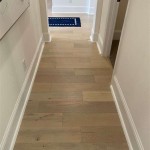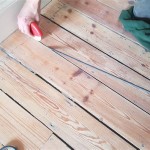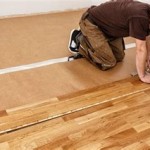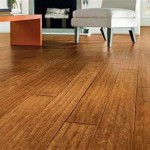Laminate Wood Flooring with Underlayment: A Comprehensive Guide
Laminate wood flooring has gained immense popularity in recent years due to its affordability, durability, and realistic wood appearance. However, achieving a truly successful installation requires careful consideration of the underlayment, a crucial component that significantly impacts the overall performance, comfort, and longevity of the flooring. This article explores the importance of underlayment, its benefits, and key factors to consider when choosing the right underlayment for your laminate wood flooring installation.
The Importance of Underlayment
Underlayment serves as a protective barrier between the subfloor and the laminate flooring. It performs several essential functions, including:
- Noise Reduction: Underlayment acts as a sound dampener, absorbing impact sounds and reducing noise transmission between floors. This is especially important in multi-story homes or apartments where noise levels can be a concern.
- Subfloor Leveling: Minor imperfections and unevenness in the subfloor can be mitigated by the cushioning provided by underlayment, creating a smoother surface for the laminate planks to rest on. This helps prevent squeaking and unevenness in the flooring.
- Moisture Protection: Underlayment acts as a moisture barrier, preventing moisture from the subfloor from reaching the laminate flooring, which can cause warping and damage.
- Improved Comfort: Underlayment adds a layer of cushioning that makes the flooring feel softer and more comfortable underfoot.
- Increased Stability: Underlayment provides added stability to the laminate flooring, reducing the likelihood of movement and clicking noises.
Types of Underlayment for Laminate Wood Flooring
There is a wide range of underlayment options available for laminate wood flooring, each with its unique characteristics and benefits. Some of the most common types include:
- Foam Underlayment: Foam underlayment is a popular and affordable option, known for its excellent noise reduction and cushioning properties. It is typically made from polyethylene foam and comes in different thicknesses, depending on the level of noise reduction required.
- Cork Underlayment: Cork underlayment offers excellent noise reduction and provides a natural, sustainable option. It is known for its resilience and ability to conform to uneven subfloors. Cork underlayment is often more expensive than foam.
- Rubber Underlayment: Rubber underlayment is a durable and resilient option that offers good noise reduction and excellent moisture resistance. It is a good choice for areas with high foot traffic or potential moisture issues.
- Combination Underlayment: Combination underlayment combines different materials, such as foam and rubber, to provide a balance of noise reduction, cushioning, and moisture resistance. This type of underlayment is generally more expensive but offers comprehensive benefits.
- Fiberglass Underlayment: Fiberglass underlayment is a thin and flexible option that provides some noise reduction and moisture protection. It is often used in conjunction with other types of underlayment for added protection.
Choosing the Right Underlayment
Selecting the right underlayment for your laminate wood flooring depends on several factors, including:
- Subfloor Condition: If the subfloor is uneven or has significant imperfections, a thicker underlayment with good cushioning properties will be necessary. For smooth and level subfloors, a thinner underlayment may suffice.
- Noise Reduction Requirements: If noise reduction is a primary concern, choose an underlayment with high noise reduction ratings, such as foam or cork.
- Moisture Protection Needs: In areas prone to moisture, opt for a moisture-resistant underlayment, such as rubber or a combination underlayment with a moisture barrier.
- Budget: Underlayment options vary widely in price, ranging from affordable foam to more expensive cork and combination underlayment.
- Installation Method: Some underlayments are designed for specific installation methods, such as stapling or gluing. Ensure the underlayment is compatible with your chosen installation method.
By carefully considering these factors and consulting with a flooring professional, you can choose the most appropriate underlayment for your laminate wood flooring installation. Remember, underlayment is an investment in the longevity, comfort, and overall success of your flooring project.

How To Choose Laminate Flooring Underlay Tile Merchant

Top Underlayment Options For Wood Laminate Flooring Surya Click

How To Lay Underlay For Laminate Flooring

Choosing Subfloor For Hardwood Tile And Laminate Floors

Pre Attached Vs Separate Laminate Underlay Which Is Best

Quietwalk 100 Sq Ft Acoustical Underlayment With Built In Vapor Barrier For Laminate Flooring Wal Com

Laminate Flooring With Attached Pad Shortens The Laying Process

Underlayment Archives Allfloors Trade Centre

Vinyl And Laminate Flooring What Is Underlayment Word Of Mouth Floors

Roberts Airguard 100 Sq Ft 40 In X 30 2 Mm 5 1 Underlayment With Microban For Laminate And Engineered Wood Floors 70 105 The Home







